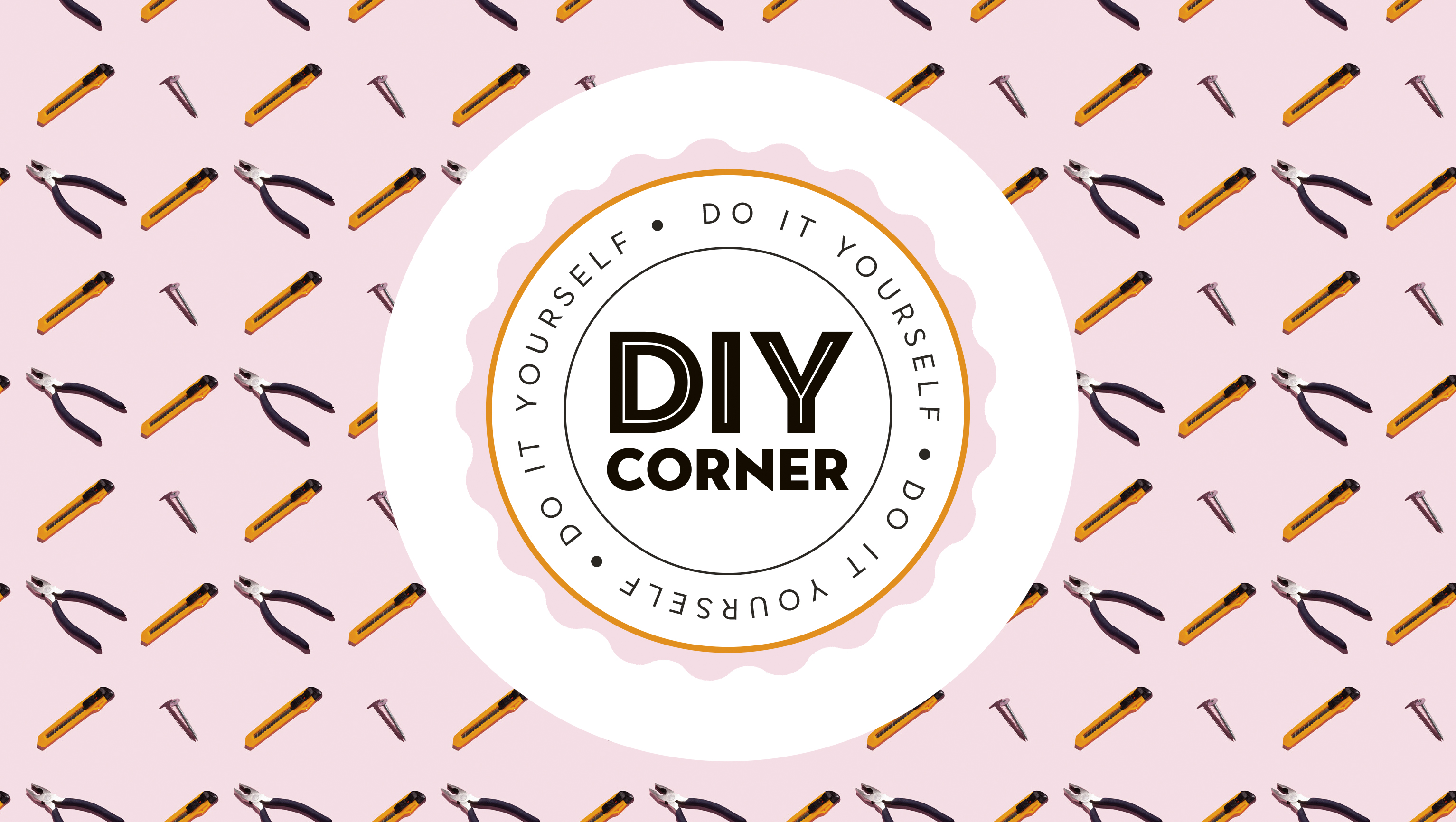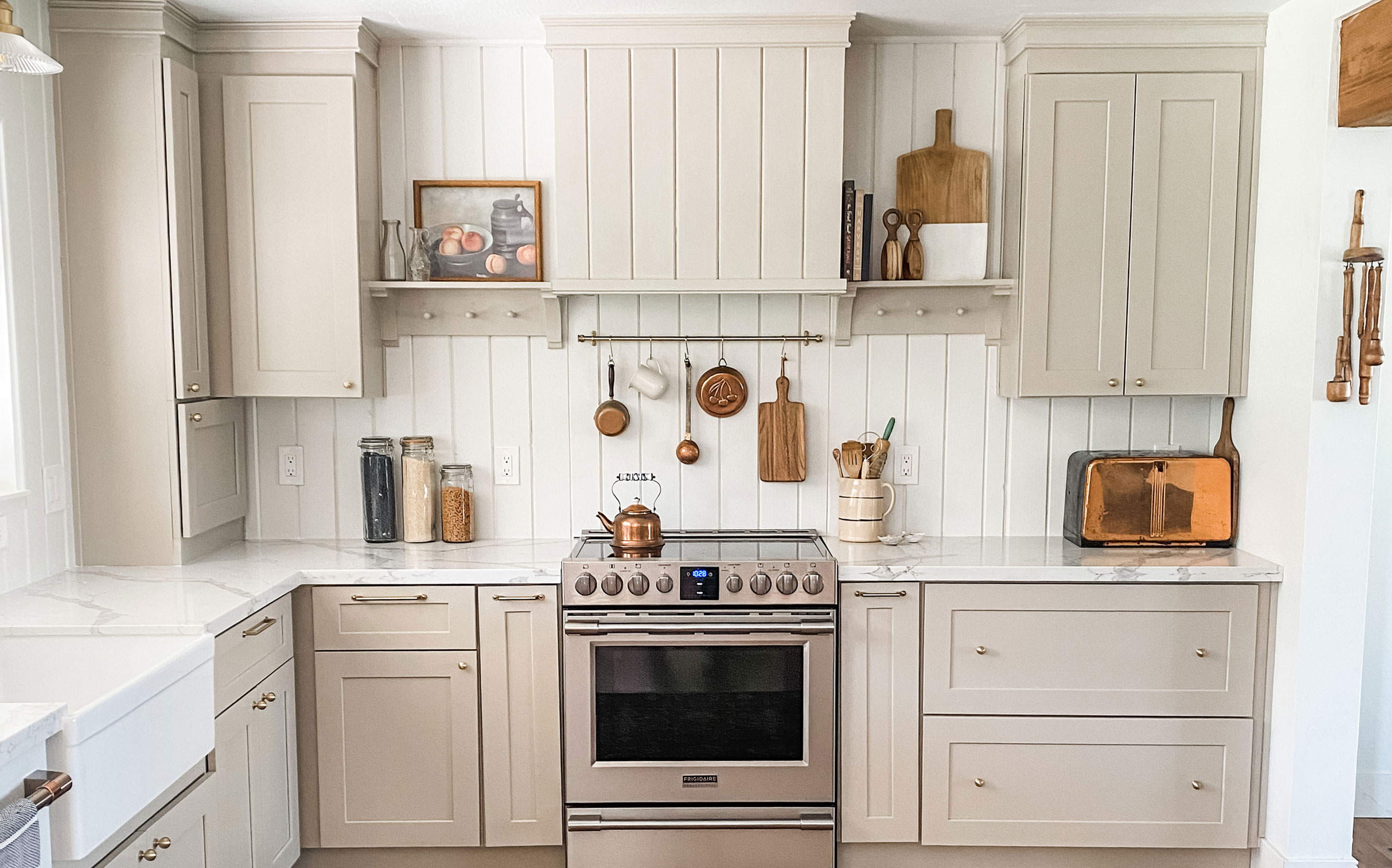
Want an easy DIY shiplap wall project to do this weekend? It is no secret around my house that feature walls of any kind are my favorite DIY projects. In particular, a good shiplap feature wall is near the top of the list.
I am sure you are familiar with shiplap; it has been all the rage since Joanna Gaines first stepped onto HGTV, and they've only become more popular as farmhouse-style homes gained a following.
I’m here to tell you, however, that shiplap isn’t reserved for farmhouse styles alone. It can very easily put a modern spin on a space, and I myself happen to love a modern shiplap look. Whether you are going for modern or rustic, shiplap is here to stay, and it is an easy way to elevate a space.
There are a few different kinds of shiplap, but for the beginner looking to find a totally doable wall paneling DIY, I recommend Nickel Gap tongue-and-groove shiplap. These types of boards provide you with a classic shiplap look and easily snap together in order to even spacing (nickel gap spacing, to be exact).
How to create a DIY Shiplap wall
You will need:
If you are in the market for this DIY project, I recommend the following supplies in order to make your process seamless:
- Nickel Gap tongue and groove shiplap from Home Depot is just the right size
- This miter saw from Home Depotdid the job
- Nail gun (finish nailer or brad nailer from Home Depotis ideal)
- Wen's palm sander from Amazongave a clean and smooth finish
- Stud finder
- Level
- Spackle
- Paint (optional)

Here's how I create the shiplap walls in my own home, with tongue-and-groove shiplap.
1. Mark your studs
The first thing you will want to do for this project is mark your studs. I recommend using the stud finder to decipher where your wall studs are and drawing straight lines with your level all the way up the wall.
Join our newsletter
Get small space home decor ideas, celeb inspiration, DIY tips and more, straight to your inbox!
These will be covered up by the shiplap boards, and it is way easier to find studs through your walls than it is to find studs through your walls and your shiplap boards. So best not skip this step...
2. Create a level base to work from
Once you have your studs marked, it's time to start hanging your boards. You will need to decide if you want to start at the top of the bottom of the wall. I don’t think that there is a right or wrong choice here, but I usually start at the bottom, simply because it is easier to ensure that a board is level while your feet are firmly planted on solid ground.
There really isn’t much left to do except to start nailing those boards into your studs, but I cannot stress enough how important it is to make sure that your first row is level.
If you are familiar with DIY, you know that most walls are not straight or level, and assuming so, you will land with a crooked shiplap wall if you do not level off your first row of shiplap. This means, even if you have a baseboard that visually looks like it's level, it's still important to level your first board. If there is a gap between your shiplap and the floor or baseboard, you can always fill it in later with spackle or painter's caulk.
Once you're sure your first shiplap board is level, use a brad nailer to nail into studs along the lip of the board to secure. Nailing along the lip will save you time from having to fill all your nail holes later because the nails will be hidden. You will want to continue hanging boards flush against one another until an entire first row is complete.
3. Paint the lip between boards
After the first row is hung, there is a step that you don’t want to miss. If I am painting the shiplap (which I always do), I paint the exposed lip of board in between rows.
This step isn’t completely necessary, but it is a lot easier to paint the gap when it is exposed than it is to go in with a small paintbrush at the end. Just a little time saver that I like to incorporate into the project.

4. Stagger and nail
Once your paint is finished, you can move on to the next row. You will see that the tongue and groove boards clip into each other. Make sure you have them pushed together all the way. If you don’t push them together as much as you can, you may end up with uneven gaps. You will continue this process all along the wall.
One thing to note - your boards will likely be shorter than your wall, so I prefer to stagger where I start my shiplap rows. The staggering of boards isn’t crucial, but I always try to make sure that there aren’t two vertical lines where two boards met right on top of each other, simply for aesthetic. So if the first board started all the way at the right edge of the wall, I'll start the next board a bit off-center, or in the middle. Then, use a miter saw and measuring tape to cut the pieces at the end of each row to fit.
Continue to level and nail, level and nail, and before you know it, you will have a beautiful wall covered in shiplap! Trim pieces around the border of the wall are sometimes a nice touch, but again, not something that is totally necessary.
5. Fill in holes and gaps with spackle
The easy part of shiplap is actually hanging it, but the following steps are just as important. Once hung, you will want to fill any nail holes and gaps in your wood boards with spackle.
Once the spackle dries, I recommend sanding it down, and repeating this process in order to ensure that your seams appear hidden, and your boards appear seamless. A more rustic look may allow for seams to be exposed, but I personally love a seamless look.
Once all seams and spackle is sanded down, you will want to wipe down the wall so that your wall is free of any dust or debris. Finally, you can go ahead and paint the planks. You can use a regular wall roller for this, but mind the gaps, as paint will sometimes pool in it.
Once all is painted, there really isn’t much left to do except admire your handy work. Good job. You just built a beautiful shiplap wall that will bring you a little extra joy every time you walk past it. Shiplap makes a statement, and with the right tools, can be a great starter-DIY.
What is the cheapest way to buy shiplap?
Shiplap can be expensive but a cheap way to replicate the look is to cut shiplap strips out of thin 1/4" or 1/3" smooth plywood or MDF sheets. Make sure you measure the wall area to determine how much plywood or how many sheets you need and measure the height of your wall to determine how wide to have the strips cut.
Can you install shiplap over drywall?
Yes, you can install shiplap over the drywall but you'll need first take the time to find all the studs in your wall and mark them before you start installing. Another thing to consider before installing shiplap, is whether your drywall is damaged. Small imperfections won't matter and can be easily covered by the wood but make sure to repair any serious damage.
The benefit of installing shiplap over drywall is that it allows an extra support to work on. It'll make it easier to create a straight shiplap wall and also it's the perfect base for hammering nails to hold the wood.
Should you paint shiplap before installing?
It's a good idea to paint shiplap before installing it as it'll be far easier to paint the edges, taking the time to paint the gaps and grooves with a small brush. If the shiplap is already on the wall, paint it like you would a wall with a roller and cut in with a brush, taking care to fill in any cracks etc. We've got a guide to how to paint a wall for a professional, streak-free finish.
About our expert
Liz Hartmann is a mom, lover of all things DIY, and creative thinker who chronicles her home renovation adventures on her blog, Miss Liz Did It. She's DIYed everything from faux marble countertops and shiplap walls, to woven headboards and bunk beds. Follow her on Instagram at @MissLizDidIt.
-
 A $200 fluted panel transformed my drab kitchen in just one weekend
A $200 fluted panel transformed my drab kitchen in just one weekendHow to install a fluted kitchen panel: A speedy and achievable DIY tutorial even for DIY novices
By Claire Douglas Published
-
 How to replace a broken staircase spindle in 30 minutes flat
How to replace a broken staircase spindle in 30 minutes flatA missing or broken spindle on a staircase is not only unsightly, but it can be a real hazard. This is how to fix it in a few quick steps.
By Kate Sandhu Published
-
 An IKEA Billy bookcase hack inspired this cute media wall DIY
An IKEA Billy bookcase hack inspired this cute media wall DIYThis cute DIY was inspired by an IKEA Billy bookcase hack and brought a ton of symmetry to an otherwise basic media wall space.
By Camille Dubuis-Welch Published
-
 Share your small space glow up to win $150 in the Real Homes competition
Share your small space glow up to win $150 in the Real Homes competitionShow off your creativity and DIY skills to win $150 and for the chance to be featured exclusively in Real Homes magazine
By Camille Dubuis-Welch Last updated
-
 This oversized headboard looks designer, and takes 5 steps to DIY
This oversized headboard looks designer, and takes 5 steps to DIYSuper simple to DIY, this oversized headboard will give your bedroom space all the designer vibes you could dream of.
By Claire Douglas Published
-
 My DIY range hood and backsplash build gave my kitchen the perfect farmhouse finish
My DIY range hood and backsplash build gave my kitchen the perfect farmhouse finishI craved charm in my kitchen space and adding a custom range hood and shelving was the best move.
By Brooke Waite Published
-
 How to paint a radiator in 7 steps
How to paint a radiator in 7 stepsPainting radiators properly is all about choosing the right paint and the best process. Get interior designer-worthy results with our how-to.
By Kate Sandhu Published
-
 How to install a door knob
How to install a door knobUpdating your interior and exterior doors can be as easy as changing out the hardware! The best part is that installing a door knob is very DIY friendly. Follow these simple steps and enjoy a fresh look on your doors!
By Dori Turner Published